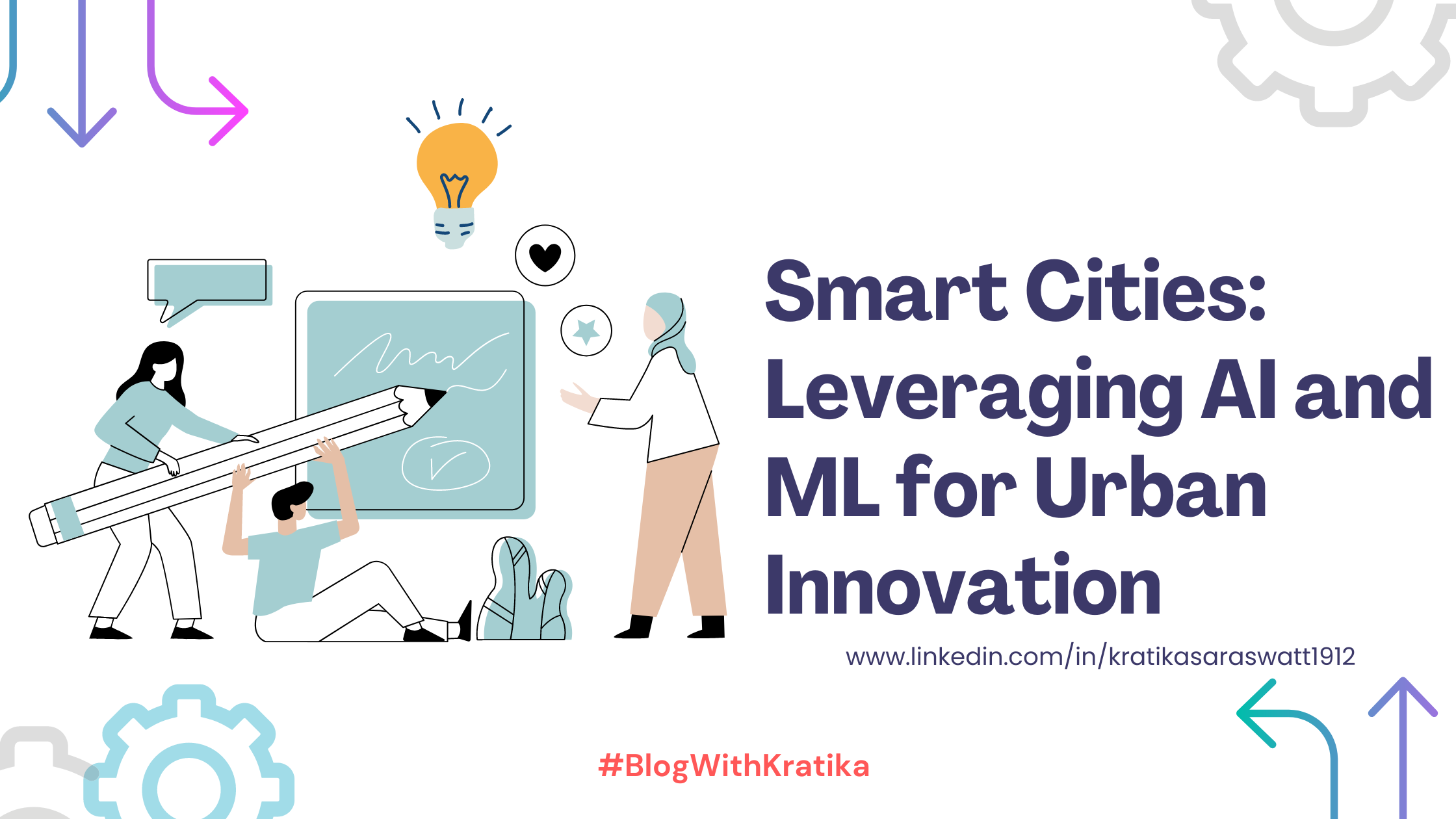Smart Cities: Leveraging AI and ML for Urban Innovation
 Kratika Saraswat
Kratika Saraswat
The concept of smart cities is no longer a futuristic vision but a present-day reality. As urban areas continue to expand, the need for sustainable, efficient, and livable cities has never been greater. Enter artificial intelligence (AI) and machine learning (ML), technologies that are driving the transformation of cities into smart, interconnected hubs of innovation. This blog explores how AI and ML are revolutionizing urban life, making cities smarter, safer, and more efficient.
The Pillars of Smart Cities
Smart cities are built on a foundation of interconnected systems that communicate and collaborate to improve urban living. Here are some key areas where AI and ML are making a significant impact:
1. Smart Infrastructure
Predictive Maintenance: AI-driven predictive maintenance systems analyze data from sensors embedded in infrastructure like bridges, roads, and buildings. By predicting when maintenance is needed, cities can prevent costly breakdowns and extend the lifespan of their infrastructure.
Energy Management: Smart grids use AI to optimize energy distribution, reduce wastage, and integrate renewable energy sources more effectively. Machine learning algorithms can predict energy consumption patterns, enabling better demand management and reducing carbon footprints.
2. Transportation and Mobility
Traffic Management: AI-powered traffic management systems analyze real-time data from cameras, sensors, and GPS devices to optimize traffic flow. This reduces congestion, lowers emissions, and improves commute times.
Public Transportation: Machine learning algorithms predict bus and train arrival times with high accuracy, enhancing the reliability of public transport. Additionally, AI can help in route planning and demand forecasting, ensuring efficient allocation of resources.
Autonomous Vehicles: The development of self-driving cars relies heavily on AI and ML. These vehicles can reduce traffic accidents, optimize routes, and provide mobility solutions for people unable to drive.
3. Public Safety and Security
Surveillance Systems: AI-powered surveillance systems enhance security by automatically detecting suspicious activities and alerting authorities. Facial recognition and behavior analysis technologies contribute to more effective crime prevention and investigation.
Disaster Management: Machine learning models can predict natural disasters such as floods, earthquakes, and hurricanes. This enables cities to prepare and respond more effectively, potentially saving lives and reducing damage.
4. Healthcare
Smart Health Monitoring: AI-driven health monitoring systems can track the health metrics of residents in real time. For example, wearable devices can detect irregular heart rates or other health issues and alert medical professionals promptly.
Disease Prevention: Machine learning algorithms analyze large datasets to predict disease outbreaks and trends. This helps public health officials implement preventive measures and allocate resources where they are most needed.
5. Environmental Sustainability
Waste Management: AI technologies optimize waste collection routes and recycling processes, making waste management more efficient and reducing environmental impact.
Air Quality Monitoring: Machine learning models analyze data from air quality sensors to identify pollution sources and predict air quality trends. This information is crucial for implementing policies to improve urban air quality.
Case Studies: Smart Cities in Action
1. Barcelona, Spain
Barcelona has implemented a wide range of smart city technologies, including smart streetlights that adjust brightness based on pedestrian activity, and sensors that monitor air quality and noise levels. The city also uses AI to optimize its public transportation system, reducing wait times and improving service efficiency.
2. Singapore
Singapore is a global leader in smart city innovation. The city-state utilizes AI for traffic management, resulting in smoother traffic flow and reduced congestion. Singapore also employs smart sensors for water management, ensuring efficient use of water resources.
3. Toronto, Canada
Toronto's Quayside project aims to create a model smart neighborhood. The project leverages AI for energy-efficient building designs, autonomous vehicles, and innovative waste management systems. The goal is to create a sustainable and livable urban environment that can be replicated elsewhere.
Challenges and Considerations
While the potential benefits of AI and ML in smart cities are immense, there are also challenges that need to be addressed:
1. Data Privacy and Security
The extensive use of data in smart cities raises concerns about privacy and security. It is crucial to implement robust data protection measures and ensure transparency in how data is collected, used, and stored.
2. Ethical Considerations
AI algorithms can sometimes produce biased outcomes. Ensuring fairness and equity in AI applications is essential to prevent discrimination and ensure that the benefits of smart city technologies are accessible to all residents.
3. Infrastructure Costs
Building smart city infrastructure requires significant investment. Cities must balance the costs with the long-term benefits and explore funding models that can support sustainable development.
Smart cities represent the future of urban living, where AI and ML play a central role in enhancing efficiency, sustainability, and quality of life. By leveraging these technologies, cities can address some of the most pressing urban challenges and create environments that are not only more livable but also more resilient and adaptable to future needs. As we continue to innovate and implement smart solutions, the vision of truly intelligent and interconnected urban spaces becomes increasingly attainable.
Subscribe to my newsletter
Read articles from Kratika Saraswat directly inside your inbox. Subscribe to the newsletter, and don't miss out.
Written by
